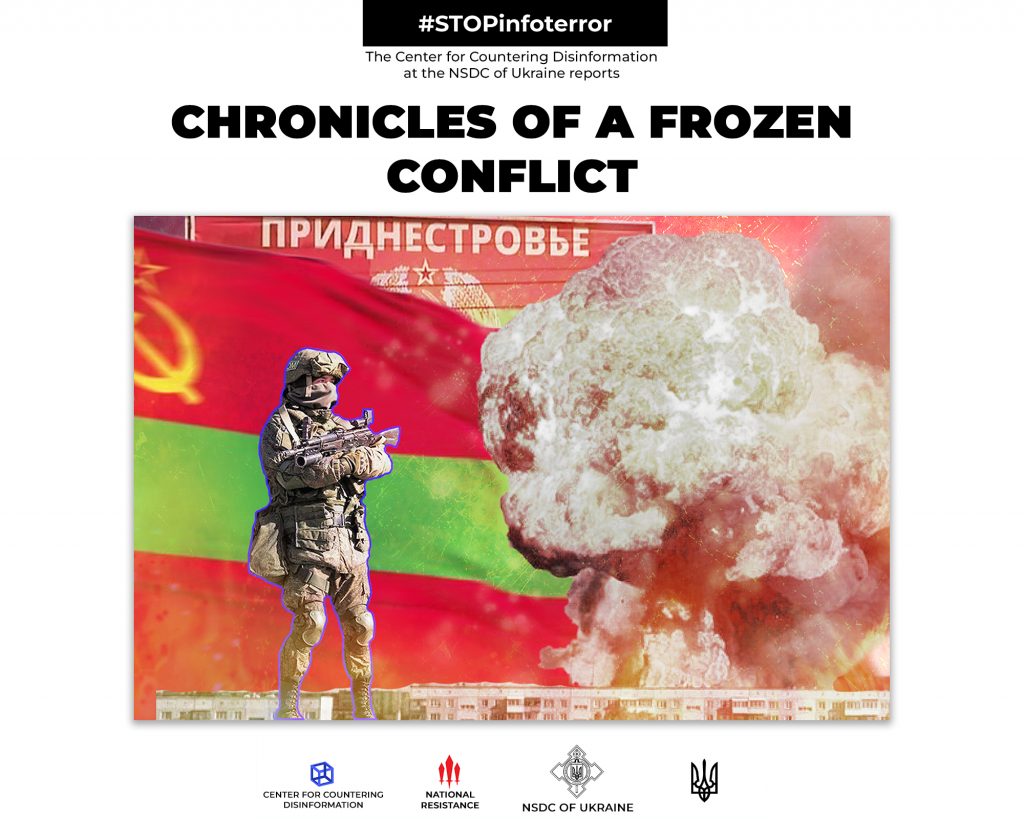The Center for Countering Disinformation explains the reasons for the emergence of the first Russian Federation terrorist enclave, created on the Soviet Union ruins.
The unrecognized “Transnistria” (also known as the Pridnestrovian Moldavian Republic or “PMR”) has existed for 31 years with seven referendums held on its self-definition. Unfortunately, negotiations, financial infusions, and even a military offensive by the Republic of Moldova have not resolved the conflict.
Transnistrian separatism started as a movement for the USSR’s preservation. In 1990-1991, along with Transnistria and Gagauzia (note: another autonomous administrative territorial entity of Moldova), separatist movements also developed in the South Odesa region, a home for Bulgarian and Gagauzian communes. Additionally, in October 1991, there was a plan to conduct a congress of the deputies from the Odessa region South Bessarabian territories (west of the Dniester River) to proclaim the Bessarabian Republic.
Officially, the Transnistrian conflict began with the language issue when the Republic of Moldova adopted a law on language. As a result, Romanian was Latinized and declared the state language of Moldova, which Transnistria perceived as an attempt at the unification of Moldova and Romania. The heads of the Soviet Union’s strategic enterprises, subordinate to Moscow, used this fact to consolidate the local population and contrast it with the rest of the country.
In 1992, after many negotiation attempts, Moldova tried to restore the constitutional order via military means. These actions led to the conflict escalation at its peak at the events in the city of Bender. More than 1,000 people died within five months. After the Russian 14th Army intervention and the agreement to end the war in July 1992, the conflict was frozen.
The significance of the Transnistrian settlement is much broader than the internal Moldovan context. It was in Moldova that the Kremlin introduced the methods later used and improved in subsequent separatist conflicts initiated by russia.
The leadership of Moldova, its armed forces, and law enforcement officers were discredited inside and outside the country. As a result, a negative attitude towards the state’s attempts to regain control over separatist Transnistria was formed.
Russia presented the fight to restore Moldova’s constitutional order against the separatists as a succession of the “Great Patriotic War” and the battle against the Romanian fascists. At first, Moldova lost information warfare and then the war itself.
The Pridnestrovian Moldavian Republic would not have survived without the political, diplomatic, and economic support of the russian federation, as well as the condescending attitude of Ukraine and Moldova’s western partners. With the help of Transnistria, russia seeks to keep Moldova in the russian sphere of influence and prevent the country from moving towards greater integration with the European Union.
Amid the russian aggression against Ukraine, even a small russian military group located next to the Odesa region adds tension. In addition, a railway connecting Odesa with the ports of Izmail and Reni (Ukrainian towns on the Danube) passes through the territory of Transnistria.
Transnistria is home to the Cuciurgan power station, which supplies power to the southern regions of the Odesa oblast. In addition to outright smuggling that undermines the economic security of Ukraine, Transnistria also employs various “grey schemes” involving the business elites of Moldova and Ukraine.
The Sheriff holding company controls most Transnistrian economic and political matters. The holding owner, an oligarch Viktor Gușan, in addition to “PMR” citizenship, has Moldovan, russian, and Ukrainian passports and owns elite real estate in Odesa and Vylkovo. His fortune is estimated at $2 billion. He controls about 60% of the “PMR” legal economy and 100% of its deputies.
A gas pipeline passes through the territory of Transnistria. “PMR” produces natural gas and sells it to local consumers at prices lower than Moldova’s. Consumers’ money goes to Transnistria’s budget, but “PMR” does not pay russia for the gas consumed. Transnistria’s debt for gas amounts to almost $7.4 billion. Moldova consumes about 2.8 billion cubic meters of gas per year.
Tiraspol does not pay Gazprom PJSC but uses money from the “gas account” for the region’s social needs. The Cuciurgan power station is also located in Transnistria, one of the primary gas consumers and simultaneously one of the leading electricity suppliers to Moldova. Hence, Transnistria receives a double payment from Moldova – for gas and electricity.
Based on the export data, the EU is seen as the primary sale market of Transnistrian enterprises. However, despite the EU policy toward Transnistria, the Transnistrian population remains predominantly pro-russian and not inclined to reintegrate with Moldova.
The Transnistrian-based russian military is estimated to have around 1,700 people. The contingent consists mainly of residents with russian citizenship; however, the officers come from russia itself. Additionally, the 7,000 to 8,000 “PMR” army forces and ~1,000 law enforcement officers can be engaged.
The Transnistrian military group has been self-sufficient since 2015, once Ukraine ceased the military cargo transit through its territory. In addition to the military contingent, there are also weapons depots in Cobasna with estimated 22,000 tons of ammunition. These depots store anything from cartridge shells to 152 mm howitzers. Some of its ammunition is decayed and requires disposal. Guarding the armory is the task of the Operational Group of Russian Forces in Transnistria and one of the russian arguments to keep their military in Moldova.
At the 1999 Istanbul OSCE summit, the russian federation committed to withdrawing troops and weapons from Moldova. russia did not fulfill its promises, although a part of the ammunition was moved or disposed of. In 2017, The Parliament of the Republic of Moldova demanded the complete withdrawal of russian troops from Transnistria. In 2018, the UN General Assembly adopted the resolution on the “Complete and unconditional withdrawal of foreign military forces from the territory of the Republic of Moldova.”
The critical mistakes of Moldova are recognizing the separatists as a negotiating party and removing the aggressor state status of the russian federation while moving russia into the mediator status. Additionally, Moldova still needs to recognize Transnistria as an occupied territory at the governmental level.










